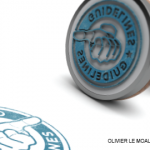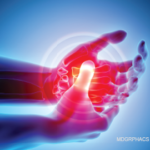 In 2021, the ACR—in concert with the Vasculitis Foundation (VF)—released four new vasculitis guidelines, one each on: 1) anti-neutrophil cytoplasmic antibody (ANCA) associated vasculitis, 2) giant cell arteritis (GCA) and Takayasu arteritis, 3) polyarteritis nodosa and 4) Kawasaki disease.1-3,5 The guideline development process is complex. For the vasculitis guidelines, this process kicked off in June 2017, when the core leadership team formed by the ACR first met in person. The ACR also convened expert and voting panels. Together, the core team and the two panels determined the project’s scope. Members of the literature review team assembled evidence using the most recent nomenclature system for vasculitis, the 2012 Chapel Hill Consensus Conference nomenclature.4 A panel of patients contributed as well. In this series, we discuss the updated recommendations with authors who contributed to each guideline. Read other installments in this series.
In 2021, the ACR—in concert with the Vasculitis Foundation (VF)—released four new vasculitis guidelines, one each on: 1) anti-neutrophil cytoplasmic antibody (ANCA) associated vasculitis, 2) giant cell arteritis (GCA) and Takayasu arteritis, 3) polyarteritis nodosa and 4) Kawasaki disease.1-3,5 The guideline development process is complex. For the vasculitis guidelines, this process kicked off in June 2017, when the core leadership team formed by the ACR first met in person. The ACR also convened expert and voting panels. Together, the core team and the two panels determined the project’s scope. Members of the literature review team assembled evidence using the most recent nomenclature system for vasculitis, the 2012 Chapel Hill Consensus Conference nomenclature.4 A panel of patients contributed as well. In this series, we discuss the updated recommendations with authors who contributed to each guideline. Read other installments in this series.
First up in this series, we talk with Sharon A. Chung, MD, MAS, about the overall vasculitis guideline effort. Dr. Chung is director of the vasculitis clinic at the University of California, San Francisco, and served as the principal investigator of the overall vasculitis guideline effort.
Q: Guidelines can be helpful in a lot of ways, and I think different people use them in different ways, depending on who they are, how they practice and how comfortable they are with diseases. How do you see these particular guidelines impacting clinical practice?
Dr. Chung: The vasculitides aren’t the most common rheumatic diseases, and many practitioners may not have much experience caring for patients with vasculitis. Therefore, the first goal is to have these guidelines serve as a resource for clinicians—in essence, a road map to guide practitioners on how to treat patients with specific types of vasculitis.
The second goal is to help clinicians think about factors that should influence the types of therapies to choose. In these guidelines, we provide alternatives to the recommended treatments and factors to consider when thinking about these alternatives.
The third purpose is to point out where we have gaps in knowledge, and to light a fire under someone to say, ‘Wow, that’ a really important question, and we really should look into it!’ That way, we have more information to make better treatment recommendations the next time.
Q: I’m curious about the process itself: How are people selected, and how did you get to recommendations? What did this look like behind the scenes?
Dr. Chung: The ACR uses the GRADE methodology to create guidelines: A core team, which includes a chair and other experts in the field, as well as a literature review expert and a grade methodologist expert, are assembled. For this project, I was the chair, and the core team included seven individuals. With input from the three panels, we developed clinically relevant questions for each of seven different types of vasculitis we wanted to address.
The questions were created in the PICO format, which stands for population, intervention, comparator and outcomes. This allows you to specify the patient population you’re interested in studying, the intervention you’re interested in, the comparator you’re interested in and, then, the outcome of interest. For example, a PICO question could be: ‘For patients with severe granulomatosis with polyangiitis (GPA) and microscopic polyangiitis (MPA), what is the impact of using rituximab vs. cyclophosphamide for remission induction when considering disease- related outcomes and adverse effects?’
We developed 176 PICO questions for the seven different types of vasculitis. The ACR published the questions for public comment, and we revised them accordingly.
Once we had the PICO questions we felt were important to answer, we sent them to the literature review team. This was a Herculean effort for the literature review team, which essentially had to conduct 176 meta-analyses for this project.
They started out with 13,800 articles, which were eventually whittled down to approximately 1,200 articles to be used in evidence reports for the vasculitides under study. Then we took each evidence report and presented it to a patient panel of 11 individuals with different types of vasculitis to get the patients’ input on particular questions, such as remission-induction strategies in ANCA-associated vasculitis or prednisone treatment for different types of vasculitis.
After we got the patient panel’s opinions, we convened a voting panel that went through the 176 PICO questions. For each, we discussed the evidence reports, incorporated the patient panel’s feedback, then generated and voted on each recommendation.
For each recommendation, we voted on the direction (i.e., Are we in support of the intervention or not?) and the strength (i.e., Do we strongly or conditionally recommend the intervention?). Strong recommendations are those that you could base policy on, often with multiple randomized controls supporting the recommendation and significant clinical experience behind that recommendation. Strong recommendations can be used as a quality-of-care indicator.
Unfortunately, in vasculitis, most of the time we don’t have strong recommendations because we don’t have multitudes of randomized controlled trials supporting our therapeutic interventions. Therefore, we also have conditional recommendations, in which the majority of individuals would want to have a particular intervention, but the alternative is reasonable as well. Any of the recommendations we put forth had to have 70% consensus of the voting panel.
You mentioned composition. The panel includes both adult and pediatric rheumatologists, because these are diseases that affect both groups, and representation from across the country. Also, we had two individuals from the patient panel on our voting panel.
Q: Tell me about these voting panels. How did that go? I mean, is it always just collegial, or do people get fired up about things?
Dr. Chung: There are definitely different practice patterns across the country. For example, I typically use more oral cyclophosphamide because that’s how I was trained. Other individuals use more intravenous cyclophosphamide because that’s how they were trained. But I think one of the great things about the vasculitis community is that we really do have a lot of respect for each other, and we all recognize that we have the same goal, which is to provide the best care for patients.
I have to give credit to the vasculitis physicians who came before me because they really established a collegial working group. Vasculitis is a disease that is far more rare than rheumatoid arthritis or gout, and we’re not going to accomplish anything if we are insular. The only way we’re going to move this field forward is by working together. Thankfully, there is a strong precedent to do so.
Q: It’s hard to imagine redoing this project right now, but what kind of plans are there to update this as things progress? Already this year we’re having a lot of interesting trials coming down the pipeline. How do you view guidelines published as a static document as something that moves forward and is useful for people in the future?
Dr. Chung: The ACR went into this process with the expectation that these guidelines would be updated in the future, so it put in the infrastructure for subsequent updates. This is one of the reasons this process was so complicated. For example, the literature review was done in a particular way so we could go back in the future and say, ‘Okay, what did we previously annotate? How can we add to it with the new knowledge?’
I would surmise that these guidelines will be re-evaluated in a few years. New PICO questions may be developed and old PICO questions taken away, the literature review will be supplemented with the new articles that have been published and the entire process will be repeated with another voting panel. Thus, there is a definite expectation that these guidelines will be revised in the future.
Q: That makes sense—actually specifying how you’re going to update, especially for moving things forward and as things progress. My last question for you: What have you learned from all this?
Dr. Chung: First and foremost, I think, is how far we have come. When I started training, the only options for treating vasculitis were prednisone and cyclophosphamide. It was during my training that the first articles were published looking at remission maintenance therapy in ANCA-associated vasculitis. Now we’re developing multiple alternative therapies. We’re learning more about how to use prednisone and how to minimize prednisone. We’re learning more about the pathogenesis of these diseases. It’s really exciting to see how much the field has moved forward, the new alternatives available to our patients for therapy, and how much better our patients are doing. In the past, our goal was to keep patients alive. We’re far beyond that now.
Working on these guidelines has been a really fun experience because of the vasculitis community. It’s all volunteer—people giving up their weekends and their evenings and doing things in a rush fashion at times for paper reviews—and they’re doing this because we all believe this is important for the field. The community that we have here is astounding.
 Michael Putman, MD (@EBRheum), is an assistant professor at the Medical College of Wisconsin, Wauwatosa, where he is the associate fellowship program director and the medical director of the vasculitis program.
Michael Putman, MD (@EBRheum), is an assistant professor at the Medical College of Wisconsin, Wauwatosa, where he is the associate fellowship program director and the medical director of the vasculitis program.
References
- Chung SA, Langford CA, Maz M, et al. 2021 American College of Rheumatology/Vasculitis Foundation Guideline for theManagement of Antineutrophil CytoplasmicAntibody–Associated Vasculitis. Arthritis Rheumatol and Arthritis Care Res (Hoboken). 2021 Jul 8. Online ahead of print.
- Maz M, Chung SA, Abril A, et al. 2021 American College of Rheumatology/Vasculitis Foundation Guideline for the Management of Giant Cell Arteritis and Takayasu Arteritis. Arthritis Rheumatol and Arthritis Care Res (Hoboken). 2021 Jul 8. Online ahead of print.
- Chung SA, Gorelik M, Langford CA, et al. 2021 American College of Rheumatology/Vasculitis Foundation Guideline for the Management of Polyarteritis Nodosa. Arthritis Rheumatol and Arthritis Care Res (Hoboken). 2021 Jul 8. Online ahead of print.
- Jennette JC. Overview of the 2012 revised International Chapel Hill Consensus Conference nomenclature of vasculitides. Clin Exp Nephrol. 2013 Oct;17(5):603–606.
- Gorelik M, Chung SA, Ardalan K, et al. 2021 American College of Rheumatology/Vasculitis Foundation Guideline for the Management of Kawasaki Disease. Arthritis Rheumatol. 2022 Apr; 74(4):586–596; and Arthritis Care Res (Hoboken). 2022 Apr;74(4):538–548.




